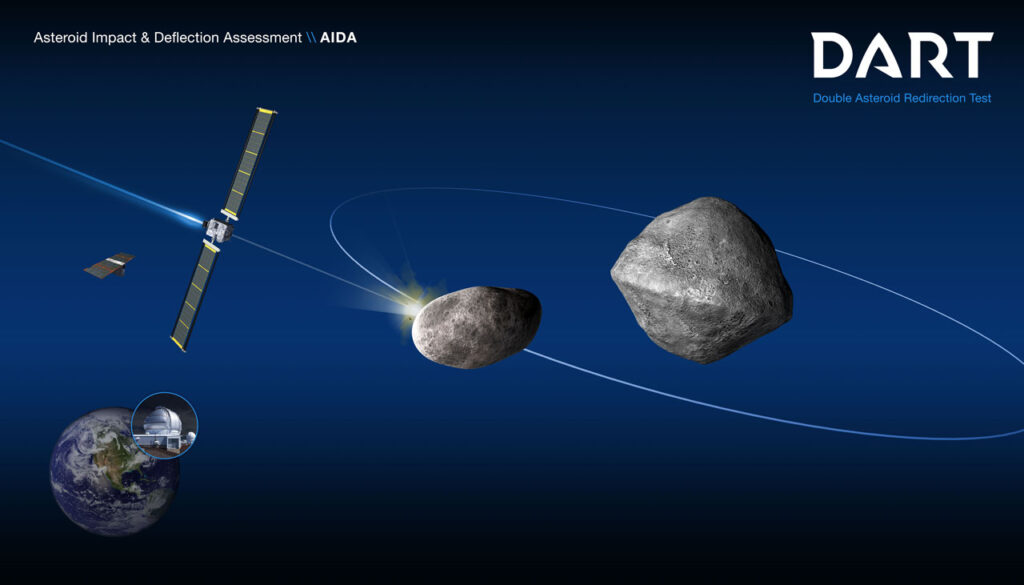
Alumni Profile: Julie Bellerose
Julie Bellerose’s career spanned two continents, three countries and a vast array of incredible missions.

Julie Bellerose’s career spanned two continents, three countries and a vast array of incredible missions.

Dr. Bellerose became one of the most accomplished aerospace engineers of her generation. Her work today encompasses missions such as DART (NASA), Hayabusa 2 (Japanese Space Agency), Rosetta (European Space Agency), and Cassini (NASA).
CAREER ORIGINS
Originally from Canada, Bellerose arrived at U-M in 2003 while pursuing her masters and PhD in aerospace engineering with Professor Daniel Scheeres. Quickly after graduating, she received a fellowship to work at the Japanese Space Agency, where she worked for a year on a mission called Hayabusa. This mission collected samples of the surface of an asteroid and brought them back to Earth. Bellerose is very thankful to Professor Daniel Scheeres, who was at U-M at the time and now is at the University of Colorado Boulder, for having facilitated her postdoc in Japan.
After this experience, Bellerose spent three years at the NASA Ames Research Center in the Bay Area in California. Here, she did trajectory work and mission analysis for various mission proposals put together by the center.
IMPACTING ASTEROIDS
In 2013, Bellerose got the chance to move to JPL. There, she worked on the spacecraft that was at Saturn for almost 20 years, also known as the Cassini mission, until the mission ended in 2017. After that, she worked on the second generation of the Japanese asteroid sampling mission, called Hayabusa2, and supported navigation of a mission with the Europeans called Rosetta. Rosetta was the first to rendezvous with a comet, the first to follow a comet on its orbit around the Sun, and the first to deploy a lander to a comet’s surface. Finally, for the past four years, Bellerose became the navigation chief for the Double Asteroid Redirection Test (DART), which finally launched in November 2021 and lasted 10 months, ending in September 2022 with the hit with the asteroid.

Bellerose was the Navigation lead for DART, a mission that although extremely innovative, she was certain would be a success.
“We still had to be ready for a miss because you never know what can happen in space,” she said. “… But I was confident in my team’s ability to bring the spacecraft to where it needed to be”
In the months leading up to the mission, the DART team made a lot of tests and rehearsals to resolve all possible kinks and to be well-prepared for unknown issues that could arise in flight.
“My team’s task was to bring the spacecraft close enough for the onboard autopilot to take over in the last 4 hours and hit the smallest of the 2 asteroids – which we couldn’t see until the last hour or so. As we were getting closer, we worked hard to make this happen, and the autopilot seemed to be in good shape,” Bellerose recalls.
Bellerose’s main learning experience from this mission was that there’s always “unknown unknowns” when flying a spacecraft– even if you think you’ve thought about everything.
“It was absolutely amazing to be part of this historic mission! It was well worth all the stress and short nights,” she writes. “I would definitely do it again!”
U-M CONNECTION
When asked about the complications of being an international student in the aerospace industry, Bellerose recognized she was very grateful to her professors at U-M for encouraging her to attend conferences outside the US. This allowed her to gain a unique set of connections and network that ultimately helped her find her job at NASA. But even beyond this, Bellerose remains very fond of her time at U-M.
“It gave me everything, basically,” Bellerose told us. “A way to think, all the tools I still use now. I kind of became an adult. I’m very grateful to the department, because they taught me how to research and how to think. I wouldn’t have made it here if I hadn’t gone to Michigan.”
Among her favorite memories of university, Bellerose recalls working on a team called M-Climber to build a mini Space Elevator. “I decided to go to Michigan because there were a lot of extracurricular projects, and this was one of the best experiences,” she said.
Regarding her experience as a woman in a male-dominated industry, Bellerose said she never felt affected by being part of the 10% of female population of the Aerospace department.
“I actually had a scholarship for women in engineering, which I was very thankful for. But I never had a bad experience– in fact, my professor had a lot of women working with him. I never felt like I was different from the male students,” she said
Bellerose’s main piece of advice to current Aero students is to study hard but also keep your eyes open.“There’s a lot of opportunities to be a part of outside the curriculum which will give you tools and build your network. You might not think this is important right now because you are focused on acing your exams, but it’s going to be very useful in the future, because finishing your degree is just the start of your life.”